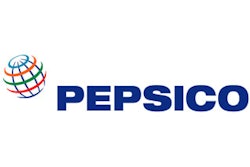WHITE CITY, Ore. (AP) — There's more to growing an organic foods business than simply buying land, building factories and shipping a high-demand product.
You also need access to organic crops, which is largely why Amy's Kitchen is building a $19 million expansion here instead of in South Carolina.
Amy's, the Petaluma, Calif., maker of frozen, organic foods, expanded here in 2006, building the company's first plant outside of California.
Yet it also wanted a production plant in the Eastern Time Zone, which is where most of its customers live. So the company bought a shuttered Sara Lee pizza-crust plant in Greenville, S.C., two years ago.
But that's as far as things went. Because while it was out looking for greener pastures east of the Mississippi, Amy's discovered the Rogue Valley looked better. When it comes to producing organic crops, the company learned, East Coast farmers have a long way to go to match their West Coast cousins.
"There really are organic material issues on the East Coast," said Chief Financial Officer Mark Rudolph. "They are still developing an organic market for the types and quantities of things we buy. Onions in the South tend be sweet onions, they're just a different product than we use. A tomato is not a tomato is a tomato. We need the same consistency with our onions as our tomatoes. We're committed to consistency and quality of our product and taste."
Between construction of a 140,000-square-foot warehouse, its overhaul and equipment costs, Amy's Kitchen has spent more than $19 million revamping its local operation the past two years.
"We had to bring more electrical power and expand our ammonia freezing capacity," Rudolph said. "There was some major heavy lifting over the past 12 months in order to add the production line. The original intent was to have storage on site rather than leasing five off-site warehouses. At the time, we thought we could eliminate those outside warehouses. We've eliminated a couple, but we still have several."
The company continues to do all of its soup production here and now has the capacity to run two new soup lines. One will start this month, Rudolph said. As demand increases, a second line will go into operation, leading to another 70 employees and pushing the plant's workforce well past 800 as early as 2014.
Rudolph said the decision to expand soup production in Medford was due largely to the availability of organic tomatoes in California and the West.
"We just don't have access to raw materials in the East like we do on the West Coast," Rudolph said. "It didn't make sense to ship tomatoes across the country to be made into soup."
Weeks before Amy's opened a plant in Corby, England, in 2011, Greenville gave the company a hero's welcome when it announced a $63 million plan to buy and remodel the former Sara Lee plant in Greenville. But seven months later, that plan was scuttled.
"We still own the land, but at the moment we have no plans to do any expansion there," Rudolph said. "There would have been logistical benefits, especially because over 60 percent of our products are shipped and sold on the East Coast."
Instead, Amy's reinvested in its Rogue Valley plant, including the addition of a third spiral freezer, in which products rise through several levels and emerge frozen 50 minutes later.
"We were able to address our capacity issues, and now we're more committed to building capacity on the West Coast, where we can leverage our existing overhead," Rudolph said.
The about-face in South Carolina set into motion a much different scenario than Amy's executives had envisioned when they built the warehouse and a 30,000-square-foot freezer here a couple of years ago. The idea back then, said Rudolph, was to gather products that are kept in cold storage around town.
The more executives evaluated the costs and logistics of operating in Greenville, however, the more appealing Southern Oregon looked.
Amy's Kitchen remains one of the Rogue Valley's big economic development successes, said Ron Fox, executive director of Southern Oregon Regional Economic Development Inc., who worked for the state's economic development office during Amy's recruitment.
"At 200 to 250 jobs, Amy's was a big success," Fox said. "And today they're on their way to 800 — that's significant. The growth speaks for what they produce and its acclamation by consumers."
When it comes to recruiting efforts, he said, Amy's name is recognized throughout the food industry.
"Amy's is always at the top of our list for examples, along with Harry & David, Tree Top and Rising Sun Farms," Fox said.
While shipping finished product thousands of miles will continue to be a logistical challenge for Amy's Kitchen, production questions will be answered on Antelope Road.
Rudolph said the master plan for the 50-acre site calls for a mirror image of the existing production building.
"We could build on the other side of the campus, but we're not interested in a mega plant," he said.






















